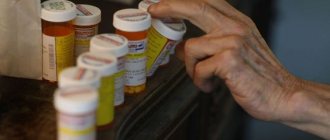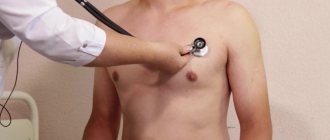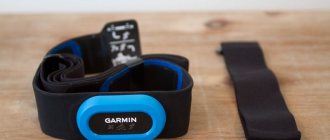Maria Kuleshova
expert biochemist
What will help your heart during cardio? How to maintain a healthy cardiovascular system?
There is no doubt that running, like any physical activity, has an effect on the heart. The heart is a muscular organ. Like other muscles, it has to adapt to the stress of intense exercise. But whether this adaptation is beneficial or harmful, scientists and doctors have been arguing for decades.
What to do immediately after training outside to avoid getting sick?
Where is the best place to run and why? Speed depends on surface
Running and heart: what is the danger?
If there is research on the effects of running on the heart, then there should be signs of this effect that appear in those who constantly engage in this type of exercise. Two of these are considered at once: an “athletic heart” and a low resting heart rate. The first term does not surprise any of the sports medicine professionals: this is the name for characteristic changes in which the thickness of the walls of the left ventricle expands. A low heart rate (bradycardia) is explained by the fact that the heart pumps more blood than in those who are not keen on running.
Could such changes be similar to heart disease? Undoubtedly. Modern diagnostic methods confirm that in most cases these changes disappear after stopping regular running. But it is known that in 20% of former professional runners, the heart chambers remain enlarged throughout their lives. And here the question arises: if there are no results of long-term observations, can we say with confidence that the “athletic heart” does not have a negative effect on the body?
Photo: unsplash.com/@aloragriffiths
The debate itself about how dangerous the stress on the heart during running is is based on examples of sudden deaths during marathons and other competitions with cardio stress. One of the cardiovascular doctors at Massachusetts General Hospital, Aaron Baggish, counted 59 cardiac arrests from 2000 to 2010, of which 42 were fatal - and this is only in the United States. He and his colleagues concluded that excellent physical fitness does not guarantee protection against heart problems while running.
The risk of sudden cardiac arrest or heart rhythm problems exists during any intense exercise. However, how to stay healthy by running regularly? Here are a few rules to follow.
Causes of the problem
Pain in the heart area is also called cardialgia. As a rule, the cause of cardialgia is the presence of some pathology in the body.
Such pathologies include:
- Angina pectoris. This disease is characterized by damage to the coronary vessels, which causes problems with blood supply to the heart.
Respiratory diseases. Pathologies of the lungs often cause pain in the heart due to insufficient oxygen saturation of the blood.- Metabolic disorders in the myocardium. Dysfunction of the biological and chemical processes in this muscle leads to tissue weakening and possible necrosis if left untreated.
- Congenital or acquired myocardial defects.
- Atherosclerosis. This pathology occurs due to the accumulation of cholesterol in the vessels. Cholesterol deposits prevent free blood circulation, so internal organs (including the heart) do not receive nutrients and oxygen in the required volume.
In addition to the listed diseases, cardialgia can be caused by arrhythmia, aneurysms and other diseases.
Important! The patient may not even be aware of pathologies of the cardiovascular and respiratory systems, since they manifest themselves precisely during cardio load, especially when its intensity increases.
A specialist who should be contacted before starting training will help identify possible diseases.
Pain can also occur for the following reasons:
- Excessive load. If a novice athlete is not physically prepared enough, then too high an intensity can only damage the body and cause cardialgia.
- Spasms of intercostal muscles. These muscles play an important role in deep and rapid breathing. When glycogen is depleted and there is a lack of oxygen, convulsions can occur, and they already cause pain in the heart area. This pain is usually localized to a specific area and is worse on the left if the person leans to the right.
Muscles used when running
- Drinking alcoholic beverages.
- Poor nutrition or overeating.
- Smoking. The negative effect of tobacco smoke on blood vessels causes a narrowing of their walls, as a result of which the vessels lose strength.
A healthy lifestyle is not limited to just jogging. To maintain physical fitness, it is important to follow a whole range of measures, including proper nutrition and giving up bad habits.
Low fat diet
If your body's fuel is fat and it makes up more than 50% of your daily calories, running may pose health risks. The fact is that fats inhibit the production of nitric oxide, and this leads to problems with blood pressure. Try to balance your diet and ensure that the fat content does not exceed 25-30%. They should be healthy - they can be found in red fish, vegetable oils, avocados and nuts.
Why shouldn't you exclude lard from your diet?
What vegetable oils can be eaten in foods?
Angina pectoris
Attacks of angina pectoris occur first during exercise or stress (this is called angina pectoris), and then at rest (rest angina pectoris). In typical cases, the pain is squeezing or pressing in nature and manifests itself either in the upper part of the sternum or to the left of it. Pain can radiate to the left arm, the left half of the face and neck, to the lower jaw, left ear, to the left shoulder blade, sometimes to the right shoulder or both shoulders and both arms, and the back. Sometimes the pain spreads to the left side of the abdomen and lower back, and to the legs. The onset of pain is rarely sudden; usually the pain is of an increasing nature, lasts for several minutes, then disappears. This pain is different in that it can be relieved with nitroglycerin, a drug that relieves spasm of the coronary arteries (which supply blood to the heart muscle).
If such pain occurs at least once, the patient should consult a doctor, get examined and clearly know what to do during an attack. During an attack of angina, you need to:
- take a nitroglycerin tablet (under the tongue);
- lie down, open a window or window;
- if after 2 minutes the pain has not decreased, then take another nitroglycerin tablet and call an ambulance. Nitroglycerin begins to act within 1-2 minutes, its vasodilating effect lasts 20-30 minutes. Remember: neither Corvalol nor validol will help with angina - only nitroglycerin!
Taking electrolytes
Electrolytes are the key to the normal functioning of the human body. Potassium, magnesium, sodium and calcium are important for any muscle. Maintaining electrolytes at proper levels is considered an integral part of a successful workout. Electrolyte imbalances harm the body: they provoke muscle spasms and decreased productivity during exercise. Deterioration in cardiovascular health in runners may be due to electrolyte deficiency.
Photo: istockphoto.com
Where can you find electrolytes? They are most commonly found in foods, but are also found in coconut water and juices made from electrolyte-rich fruits and vegetables. And most importantly - in drinking water. On average, 1 liter of tap water contains 2-3% of the daily intake of sodium, calcium and magnesium, but little potassium. And the same amount of special sports drinks enriched with electrolytes contains up to 18% of the normal sodium and 3% potassium, but little magnesium and calcium.
What to do if discomfort occurs
The appearance of pain during physical education is a signal to stop training. For a further successful career in sports and to prevent the recurrence of pain, it is recommended:
- consultation with a doctor to determine the underlying cause;
- reducing the intensity of exercise if pain occurs for the first time against the background of a sharp increase in load;
- do not eat 1-1.5 hours before training (exclude the possibility of reflux);
- a balanced diet containing sufficient amounts of proteins, fats and carbohydrates, vitamins and minerals;
- regulate rest periods, which are necessary for sufficient recovery of muscles and internal organs. An increase in endurance and strength occurs both as a result of intensive training and adequate relaxation to consolidate the achieved result.
People with chronic pathology, which causes pressing pain in the heart area, are recommended to consult with a doctor regarding the dosage of medications before playing sports or competitions.
Regular visits to doctors
There is no need to run after every workout for a blood test, but every runner should monitor his health. You should contact your doctor for regular checkups and if you experience any discomfort after exercise, such as dizziness or severe pain in the joints.
Everything is under control: how a man can undergo a full medical examination
Fitness machines of the future Tempo Studio and Tonal: what training will look like in 10 years
What to consider when planning your workouts
First of all, before starting jogging, you must undergo a medical examination and establish the level of so-called “initial health.”
It is also very important to monitor your heart rate during exercise. By your heart rate you can judge the intensity of physical activity for your body. The most accurate pulse zones for constructing the training process can be determined using treadmill testing with gas analysis and blood sampling.
This test will show such important indicators for runners as maximum oxygen consumption (VO2) and anaerobic metabolic threshold (ANT). Based on these indicators, one can judge the athlete’s fitness, and with further repeated testing, evaluate the effectiveness of the training process.
Maintaining drinking balance
To maintain water balance and heart function during cardio exercise, the body requires magnesium, 70% of which is absorbed from water. Magnesium helps the heart muscle relax while pumping blood, which means you can exercise without shortness of breath or harm to your health. An additional bonus is that magnesium has a positive effect on the functioning of the heart, muscles and nervous system. It improves performance and normalizes sleep.
Magnesium is indispensable for athletes, as it is involved in protein synthesis, which means that the very next day you can continue training without discomfort in the muscles.
Building the right training regime
Professional athletes often seek the help of a sports doctor, who draws up a training plan in accordance with the person’s clinical parameters and level of adaptation to stress. A rational approach to sports involves adherence to several principles:
- constancy - effectiveness is largely determined by the absence of long pauses between training, since each break implies the need to re-adapt organs and systems to stress;
- gradualism - a step-by-step increase in intensity adequately develops the habituation of both muscles and internal organs;
- accessibility – training regimes should be suitable for athletes with different levels of fitness;
- individuality - the training plan is drawn up taking into account the characteristics of the body of a particular person;
- variability - the ability to choose classes with different effectiveness or technique, which comprehensively develops physically.










